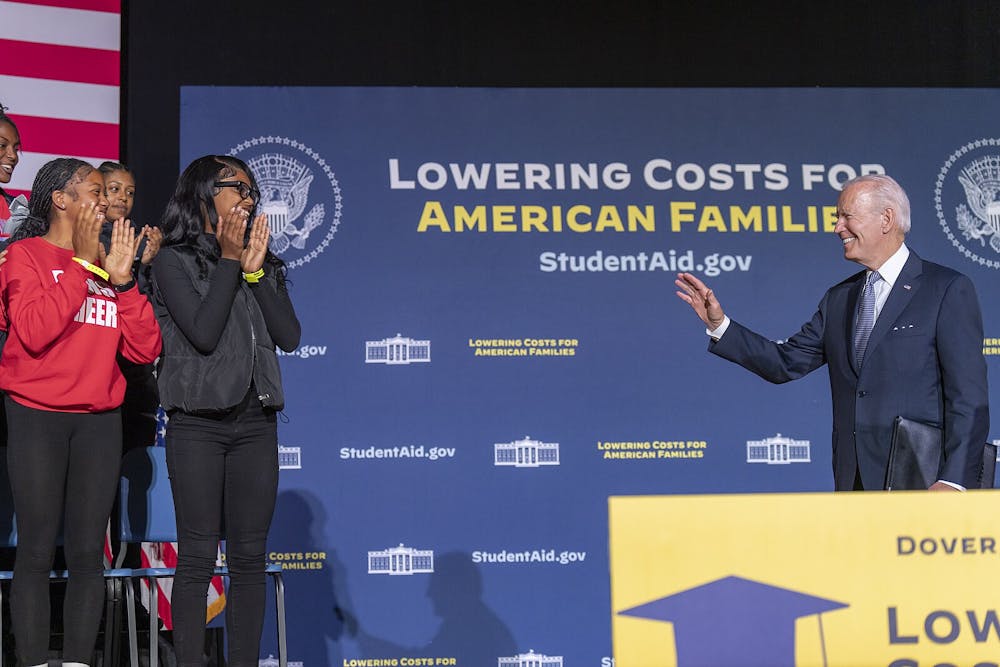By Aliyah Siddiqui
Nation and World Editor
The Biden administration is once again trying to provide debt relief to the millions of U.S. citizens who have student loans. On Oct. 4, President Joe Biden announced that 125,000 Americans will be approved for $9 billion in debt relief. This announcement comes after the Supreme Court struck down Biden’s former loan forgiveness program and as student debt repayments restart.
The new debt relief was directed towards Americans participating in income-driven repayment and Public Service Loan Forgiveness programs; debt was also canceled for people with permanent disabilities.
In the announcement, the Biden administration extolled their accomplishments regarding student debt relief, including that $127 billion in debt has been canceled for nearly 3.6 million Americans to date.
“Nearly $2.8 billion in new debt relief for nearly 51,000 borrowers through fixes to income-driven repayment,” the statement also said. “These are borrowers who made 20 years or more of payments but never got the relief they were entitled to.”
The statement also revealed that Biden was planning on using the Higher Education Act, which allows the secretary of education to waive student loans, to continue his agenda with debt relief.
“The HEA gives the Secretary of Education the authority to ‘enforce, pay, compromise, waive, or release any right, title, claim, lien, or demand,’ including Federal student loans,” said James Kvall, Under Secretary of Education. “Our current regulations lack specificity on how that authority is applied.”
Through negotiations between the U.S. Department of Education and 14 constituency groups, which will include civil rights organizations, state officials, HBUCs and student loan borrowers, the Biden administration will seek feedback on how to best aid borrowers.
According to PBS, the details of who is eligible for forgiveness as well as the amount of relief will be released later as the negotiations will continue until December. In the end, negotiators will vote on a proposal for the Department of Education to move forward with. If a consensus is not reached, the DOE will propose a plan, which can be finalized after a public comment period.
Regardless of Biden’s efforts, the prospective proposal may still be struck down. In the Supreme Court ruling earlier this year regarding Biden’s previous debt relief plan, the Court ruled that the secretary of education only had the power “to make modest adjustments and additions to existing provisions, not transform them.” According to legal analysts, this statement indicates that mass debt relief without Congressional acts may be rejected.
Republicans are also voicing their concerns over debt cancellation, arguing that it uses taxpayer money to benefit college graduates at the expense of people who did not attend college. According to the Washington Post, Republicans also argue that the move surpasses Biden’s presidential authority.
“The Department [of Education] still refuses to share with Congress what statutory authority they are claiming to justify this expenditure of taxpayer dollars,” Sen. Bill Cassidy, the ranking Republican on the Senate Health, Education, Labor and Pensions Committee, said. “This is part of a pattern of the Biden administration illegally acting without congressional approval, costing the American people hundreds of billions of dollars.”
Despite these concerns, Biden’s recent efforts indicate that he may plan to use student loan forgiveness as a major talking point in the 2024 election. They also demonstrate his commitment to fulfill his campaign promise of broad debt relief.
“My administration is doing everything it can to deliver student debt relief to as many as we can, as fast as we can,” Biden said. “My administration will continue to use every tool at our disposal to help ease the burden of student debt so more Americans can be free to achieve their dreams.”







